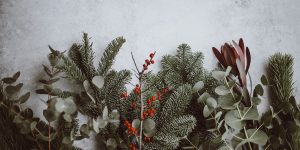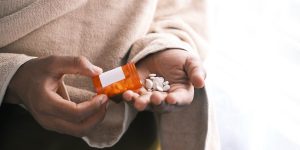The Alarming Way Public Opinion Affects Drug Addiction
There’s no arguing with the fact that the United States faces a massive alcohol and drug addiction problem. The alarming number of lives lost to drug- and alcohol-related causes show little sign of dropping any time soon. Millions of people struggle to control their use which affects millions more who love them.
But have you ever stopped to wonder whether there is another way to look at the story?
Some researchers insist that the current view of drug addiction doesn’t look at the whole picture. They are quick to emphasize that substance use disorders are severe, distressing conditions that impair a person’s ability to function. But research also reveals that an estimated 70 to 90% of people, even those who use substances, don’t meet the criteria for the condition.
These same researchers point out that maybe drug use alone isn’t the problem; the way we look at drug use contributes to it, too. Data reveals that the majority of drug use is infrequent and recreational. Most people who use substances, even hard drugs like heroin or methamphetamine, do not have a lasting diagnosable substance use disorder. But the current narrative implies that any use at all leads immediately to drug addiction.
According to the National Survey on Drug Use and Health, 20.8% of people ages 12 and older reported using illicit drugs at least once in the last year. That same survey reveals that only 3% of that same population meets the criteria for an illicit drug use disorder. While 20 out of every 100 people have used drugs in the last year, only 3 out of 100 have a diagnosable substance problem.
What does that mean about the way we look at drug use in the United States?
Perhaps there are more effective solutions to provide someone seeking help for their substance use problem. Studies show that when rats or primates are offered the ability to self-administer cocaine or methamphetamine, some will do so until they die. When scientists offer them a healthy alternative like a running wheel, some choose the alternative instead.
There is no single story that accurately depicts drug use or even drug addiction. Despite the negative stigmas and stereotypes, millions of people from all walks of life use drugs in some capacity. There are also people from all walks of life who struggle with a legitimate substance use disorder problem. But the narrative may have you thinking otherwise.
For example, “48 Hours on Crack Street” was a popular television show that portrayed Black people using crack. This media representation focused on a single sliver of the people who use crack but formed the image of what the masses believed crack users look like. In reality, research shows that white individuals tend to use crack at higher rates.
The problem extends to the ways we view certain drugs compared to others. Opioids are the perfect example. Both prescription painkillers and heroin are opioid drugs with similar effects. But public opinions surrounding heroin use are far more negative than those surrounding prescription painkillers. People pop painkillers like candy but heroin is viewed as a dirty drug.
Again, this doesn’t negate the very real problem of substance use disorder. The harmful reality of compulsive drug use can include the possibility of fatal consequences. But at the same time, painting every person with the brush of addiction doesn’t seem to be helping the problem as a whole.
Looking at addiction recovery through a single lens is a harmful approach and keeps many from receiving the help they need. Immediately branding someone who uses substances as an addict isn’t an effective way to handle things. Not everyone who uses drugs needs the intensive intervention of an addiction treatment program.
Alternative approaches to addressing concerns with substance use have a place in the discussion. If studies show that some rats prefer alternatives like an exercise wheel to cocaine or methamphetamine, why wouldn’t human beings reflect the same behavior?
Maybe the problem isn’t the drugs alone but the way we’re looking at them. How do your preconceived notions about drug use affect the way you look at addiction recovery? Do you see the path to recovery as a one-way street with a single path to the destination point?
Recovery doesn’t look the same for everyone. The destination point varies from person to person. No one has a monopoly on productive, effective addiction recovery. Using one brush to paint over the entire problem is likely contributing to its continuation. Accepting the idea that alternatives have their place in the world of recovery may be the key to turning the trend downward.
If you or a loved one are struggling with dependence on alcohol or other substances, contact Emerge Recovery. Locating a safe space to discuss these challenges, in a professional and non-judgemental environment, is the first step to recovery. For more information on how Emerge Recovery can help you, contact them today at 888.273.8624 or set up a complimentary 30-minute recovery activation call.












